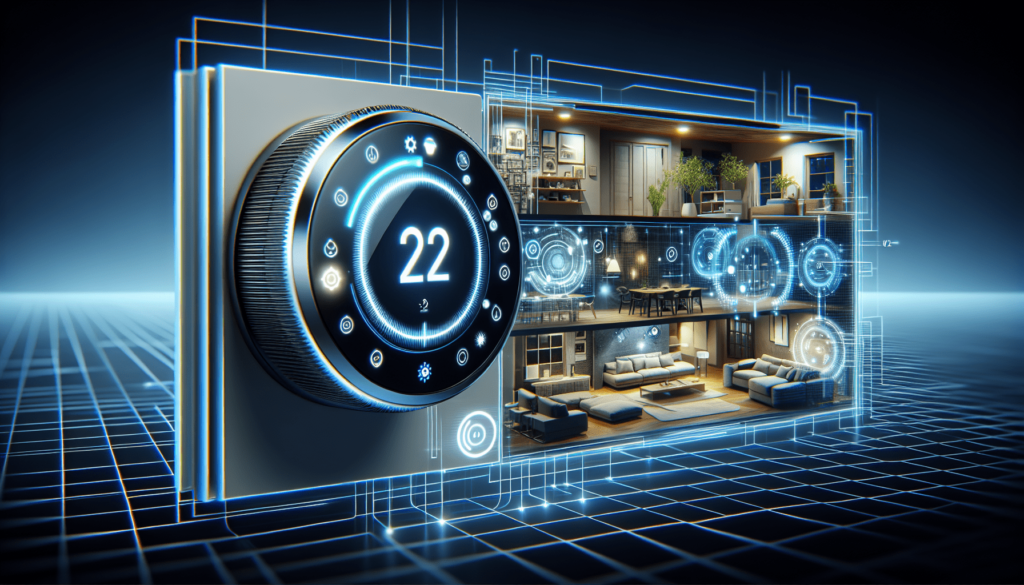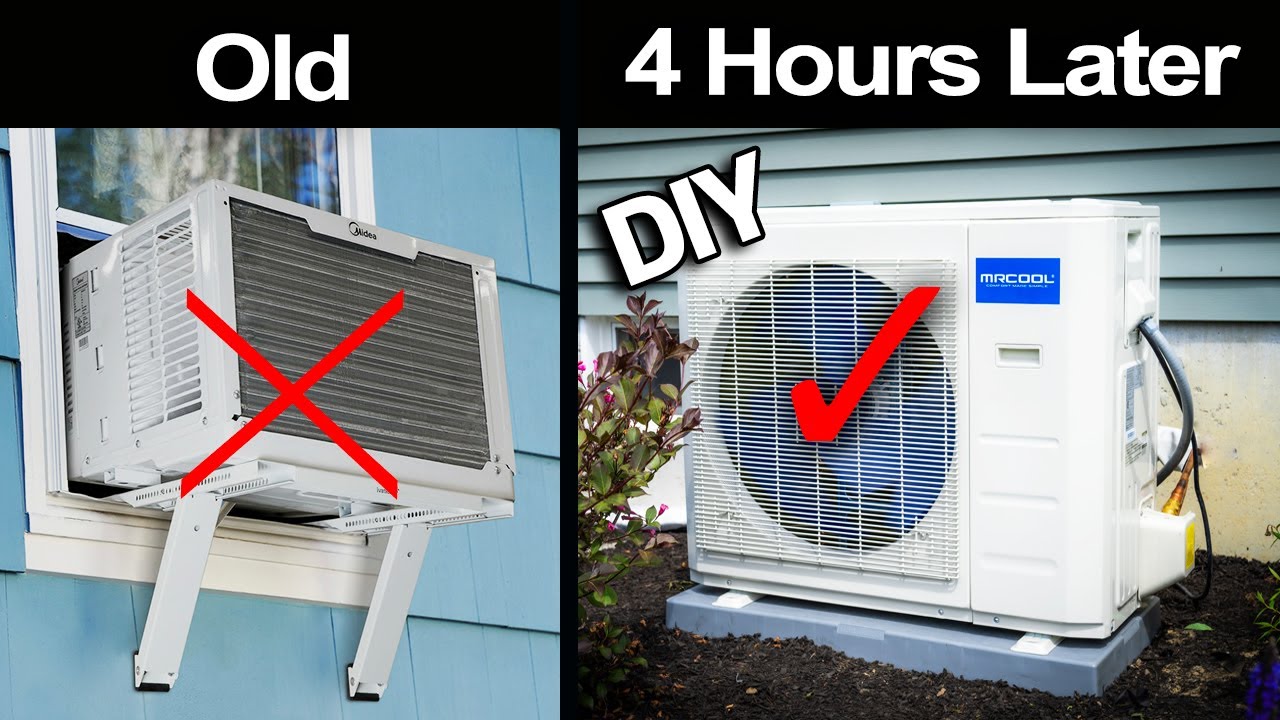Are you tired of constantly adjusting the temperature in your home to accommodate everyone’s preferences? Look no further! In our article, “Best Practices for Zoning Your Home’s Air Conditioning System,” we will explore the most effective techniques for creating individual temperature zones in your home. By implementing these best practices, you can achieve optimal comfort while also saving energy and reducing your utility bill. So say goodbye to those squabbles over the thermostat, and say hello to a perfectly climate-controlled home for everyone to enjoy.

Understanding Zoning Systems
What is a zoning system?
A zoning system is an advanced HVAC (heating, ventilation, and air conditioning) technology that divides a home into multiple zones, each with its own thermostat and control dampers. This allows you to independently control the temperature in different areas of your home, providing personalized comfort and reducing energy waste.
How zoning system works?
A zoning system works by using a network of thermostats, dampers, and a central control panel. Each thermostat is installed in a different zone and communicates with the control panel. The control panel then activates the dampers in the ductwork to allow or restrict airflow to each zone based on the temperature settings. This zoning allows for more precise control over heating and cooling, ensuring optimal comfort and energy efficiency.
Benefits of a zoning system
There are several benefits to installing a zoning system in your home. Firstly, it allows you to customize the temperature in each area, catering to individual comfort preferences. This helps eliminate hot or cold spots and ensures everyone is comfortable. Secondly, a zoning system can significantly reduce energy waste by only conditioning the areas of your home that are in use. This leads to lower energy bills and reduced environmental impact. Lastly, zoning systems can improve the lifespan of your HVAC system by reducing strain and wear, ultimately saving you money on maintenance and repairs.
Determining Zones for Your Home
Establishing zoning based on home’s layout
When determining the zones for your home, it’s essential to consider the layout of your house. Separate levels, wings, or distinct architectural features such as a basement or a sunroom may warrant their own zones. Look for areas that have consistent heating and cooling needs and group them together to create zones.
Consideration of personal comfort preferences
Personal comfort preferences should also be taken into account when establishing zones. For example, if someone in your household prefers their bedroom to be cooler than the rest of the house, it makes sense to create a separate zone for that area. Consider family members’ preferences and daily routines to ensure everyone’s comfort needs are met.
Considering sun orientation and room usage
The orientation of your home in relation to the sun can impact the temperature of certain rooms. South-facing rooms tend to be warmer, while north-facing rooms may be cooler. Additionally, rooms with large windows or high ceilings may require different temperature settings. Take note of these factors when determining zones to ensure efficient temperature control.
Accounting for architectural features
Architectural features such as vaulted ceilings, open concept layouts, or rooms with high heat gain should be considered when establishing zones. These features can affect the airflow and temperature distribution in your home. By accounting for them, you can create targeted zones that address any potential challenges and ensure optimal comfort in every area.
Choosing Right Equipment
Types of zoning systems and their suitability
There are several types of zoning systems available, including single-stage, multi-stage, and variable speed systems. Single-stage zoning systems are the most basic and divide your home into two zones: upstairs and downstairs. Multi-stage zoning systems offer more flexibility by allowing you to create multiple zones with different temperature settings. Variable speed systems are the most advanced and provide precise control over airflow and temperature. Consider your specific needs and budget when choosing the right type of zoning system for your home.
Finding the right size of equipment
To ensure the proper functioning of your zoning system, it’s crucial to select the right size of equipment. Oversized equipment can lead to short cycling, inefficient operation, and temperature imbalances in different zones. Undersized equipment may struggle to meet the heating or cooling demands of your home. Consult with a professional HVAC technician to determine the appropriate size of equipment based on your home’s square footage, insulation, and other factors.
Energy efficiency considerations
When selecting equipment for your zoning system, it’s important to prioritize energy efficiency. Look for systems with a high SEER (Seasonal Energy Efficiency Ratio) rating, which indicates how efficiently the system can cool or heat your home. Opting for energy-efficient equipment not only reduces your carbon footprint but also leads to lower energy bills over time. Additionally, consider selecting equipment with smart features that can further enhance energy efficiency and optimize comfort.
Installation of a Zoning System
Professional installation vs DIY
While some homeowners may consider DIY installation for cost-saving purposes, it is highly recommended to hire a professional for the installation of a zoning system. Proper installation is crucial for the effective functioning and longevity of the system. HVAC professionals have the knowledge, experience, and tools necessary to ensure a seamless installation process, comply with local regulations, and minimize any potential risks or errors. Investing in professional installation will give you peace of mind and ensure the optimal performance of your zoning system.
Key installation steps
During the installation process, several key steps are involved to set up a zoning system correctly. These steps often include installing thermostats in each zone, positioning control dampers in the ductwork, connecting the thermostats and dampers to the control panel, and programming the system for proper functionality. Each step requires precision and expertise, which is why it’s best left to trained professionals.
Ensuring safety during installation
Installing a zoning system involves working with electrical wiring and making modifications to your HVAC system. It’s crucial to prioritize safety during the installation process. HVAC professionals are well-versed in safety procedures and are equipped with the necessary protective gear. They can ensure that all electrical connections are secure, that no damage is done to your existing HVAC system, and that the installation complies with local building codes and regulations.

Importance of Proper Thermostat Placement
Deciding on the appropriate height
Proper thermostat placement is essential for accurate temperature readings and optimal performance. Ideally, thermostats should be placed at eye level, around 52-60 inches above the floor. This height allows the thermostat to measure the average temperature in the room accurately and ensures that it is easily accessible for programming and adjustments.
Avoiding locations with temperature extremes
Thermostats should not be installed in areas with temperature extremes or sources of heat or cold, as this can lead to inaccurate temperature readings. Avoid placing thermostats near windows, doors, air vents, or direct sunlight. These locations can cause the thermostat to register incorrect temperatures, leading to inefficient operation of the zoning system.
Room location considerations
When deciding on thermostat placement, consider the location of the room within the zone. If possible, install thermostats in rooms that are representative of the average temperature needs for that zone. Avoid placing thermostats in rooms that are heavily influenced by external factors, such as kitchens, laundry rooms, or rooms with large windows. This will help ensure that the temperature in that zone is balanced and adequately controlled.
Regular System Maintenance
Maintaining air filters
Regular maintenance of your zoning system is crucial to keep it running smoothly and efficiently. One essential maintenance task is cleaning or replacing the air filters. Clogged or dirty filters can restrict airflow, reduce system efficiency, and cause issues with temperature control. Check the filters monthly and clean or replace them as needed to maintain optimal performance.
Regularly checking thermostats
It’s important to periodically check the thermostats in each zone to ensure they are functioning correctly. Verify that the temperature readings are accurate and compare them to a separate thermometer if necessary. Additionally, check that the programmable features are working as intended. If any issues are identified, contact an HVAC professional for troubleshooting and repairs.
Servicing the entire system periodically
In addition to individual component maintenance, it’s advisable to have the entire zoning system serviced by a professional on a periodic basis. They can perform routine inspections, clean the ductwork, check the functionality of the control panel, and make any necessary adjustments or repairs. Regular servicing will help identify and address any potential issues before they become major problems, prolonging the lifespan of your zoning system.
Troubleshooting Common Problems
Addressing uneven cooling and heating
If you experience uneven cooling or heating in your home, there may be an issue with your zoning system. Start by checking the zoning settings and ensure they match your desired temperature preferences. If the problem persists, there may be an imbalance in the airflow or issues with the control dampers. Contact a professional HVAC technician to diagnose and address the problem.
Handling system noises
Unusual noises coming from your zoning system can indicate underlying issues. Rattling, banging, or hissing sounds may indicate loose components, ductwork issues, or airflow problems. If you notice any unusual noises, it’s best to have a professional inspect and repair the system to prevent further damage or discomfort.
Dealing with frequent system cycling
Frequent system cycling, where the system turns on and off frequently, can be a sign of an issue with your zoning system. This may indicate improper system sizing, faulty thermostats, or malfunctioning control dampers. Consult with an HVAC professional to diagnose and resolve the problem to prevent energy waste and potential damage to your equipment.
Upgrade or Replace Your Zoning System
When to consider an upgrade or replacement
There are several situations where you may need to consider upgrading or replacing your zoning system. If your current system is old and outdated, lacks the necessary features for optimal comfort and energy efficiency, or requires frequent repairs, it may be time for an upgrade. Additionally, if you’re renovating your home or adding new zones, your current system may not be able to meet the increased demands, warranting a replacement.
Choosing a replacement system
When choosing a replacement zoning system, consider your current and future needs. Evaluate the size of your home, the number of zones required, and any specific features or technology you desire. Consult with an HVAC professional who can recommend the most suitable options based on your requirements, budget, and energy efficiency goals.
Benefits of upgrading to a new system
Upgrading to a new zoning system offers several benefits. Firstly, newer systems often come with advanced features such as smart technology integration and programmable settings that enhance comfort and energy efficiency. Secondly, newer systems are more reliable, reducing the need for frequent repairs and maintenance. Lastly, upgrading to a more energy-efficient system can lead to significant energy savings over time, contributing to a greener and more sustainable home.
Saving Energy and Money with a Zoning System
Reducing energy usage
One of the key benefits of a zoning system is its ability to reduce energy usage. By only conditioning the zones that are in use, you can avoid wasting energy on unoccupied areas. Additionally, the precise control of temperature settings allows for better energy management, ensuring that each zone is conditioned according to its specific needs. This targeted approach can lead to substantial energy savings, decreasing your carbon footprint and lowering your utility bills.
Minimizing wear and tear on the system
Another advantage of a zoning system is its ability to minimize wear and tear on your HVAC system. By providing individualized temperature control, the system operates more efficiently and experiences reduced strain. This reduces the likelihood of premature mechanical failures, prolonging the lifespan of your HVAC equipment and saving you money on repairs and replacements.
Maintaining optimal home comfort
A zoning system allows you to maintain optimal home comfort by providing personalized temperature control in each zone. This eliminates hot or cold spots and ensures that everyone in your household can enjoy their preferred level of comfort. Whether it’s adjusting the temperature in the bedroom for a good night’s sleep or keeping the living room cozy during gatherings, a zoning system helps create an environment that suits everyone’s needs.
Legal and Regulations
Local building codes and regulations
When installing or modifying a zoning system, it’s important to consider and adhere to local building codes and regulations. These codes may dictate requirements for equipment installation, wiring, ventilation, and other aspects of the HVAC system. Compliance with these codes ensures the safety, efficiency, and legality of your zoning system.
Permit requirements
In many cases, obtaining a permit is necessary when installing or replacing a zoning system. Permits are typically required to ensure that the work is performed correctly and up to code. Failure to obtain the necessary permits can result in fines or other legal complications. Check with your local building department to determine the specific permit requirements for your area.
Working with a licensed professional
To ensure compliance with local regulations and to guarantee a safe and effective installation, it is essential to work with a licensed HVAC professional when installing or modifying a zoning system. Licensed professionals have the necessary knowledge and expertise to navigate the complexities of zoning system installation, ensuring that the work is done correctly and in accordance with legal requirements. By working with a licensed professional, you can have confidence in the quality and integrity of your zoning system.





